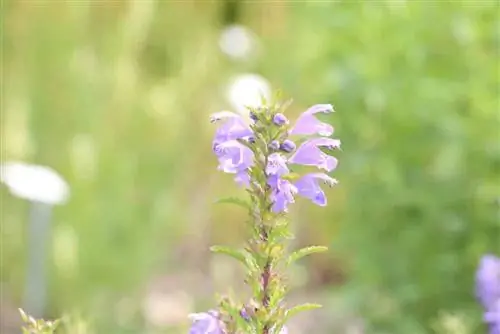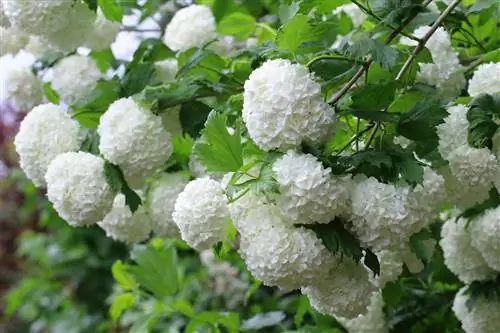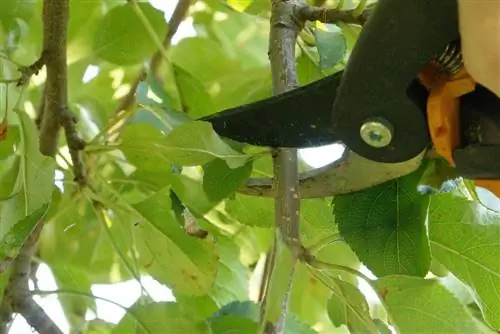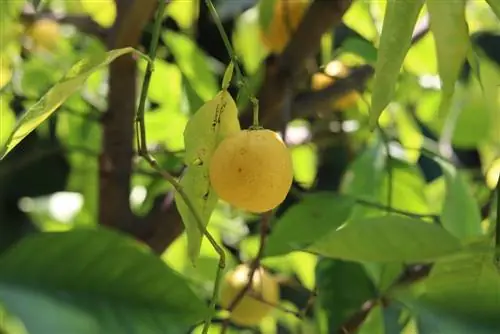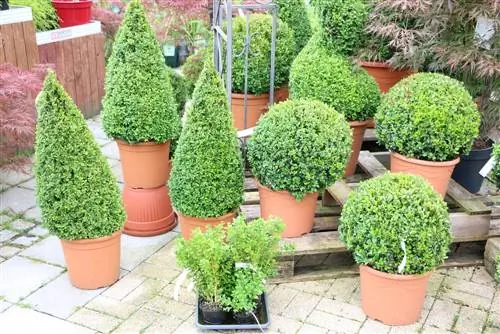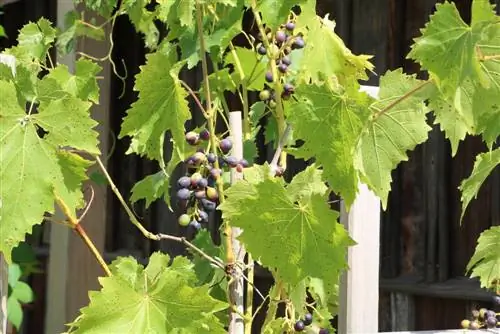- Author admin [email protected].
- Public 2023-12-17 03:39.
- Last modified 2025-01-24 12:45.
The dragon head plant provides convincing evidence that aesthetics and ecology do not have to be mutually exclusive in garden design. The annual, herbaceous ornamental, spice and tea plant impresses with lilac-colored flower clouds that emit an intoxicating scent reminiscent of lemon. In addition, the dramatically shaped lip flowers offer plenty of nectar to busy bees, bumblebees and butterflies and transform the garden into a paradise for beneficial insects. The following instructions for caring for a Dracocephalum moldavica convey its undemanding nature.
Location
In the context of successful care, the location is considered a supporting pillar. If the dragon's head plant finds a place in the garden with adequate conditions, it will even accept one or two oversights without complaint. A quick look at their preferred natural locations in Eastern Europe and Asia shows what the optimal planting site should be like. There, Turkish lemon balm likes to thrive along stony riverbeds, on dry hills and on sunny embankments. This is how the location in the garden should be:
- A warm place with lots of hours of sunshine
- Normal, medium-heavy, clay-rich garden soil
- Fresh and well drained
- Neutral to slightly calcareous pH value
In view of the demands placed on the location, a settlement in the rock garden seems just as sensible as in the herb garden, in the cottage garden and in flower borders.
Tip:
The dragon head plant also sets decorative accents in the pot. Commercially available potting soil serves as the substrate, enhanced with a little sand, perlite or expanded clay.
Watering and fertilizing
If the weather conditions are normal, the Moldovan scorpionfish is content with the average amount of rain. The flower is only watered during long dry periods. The water should not trickle down onto the flowers and leaves from above, but should be poured directly onto the roots. In the planter, the watering requirement is regularly higher, given the limited substrate volume. If the thumb test indicates dried soil, watering is carried out.
- Fertilize Turkish scorpionfish in the bed from May to August with compost and horn shavings
- Administer diluted liquid fertilizer weekly in the container during the growing season
- Do not apply fertilizer preparations to dried substrate
Organic fertilization is particularly recommended if the flowers and leaves are used to prepare tea, to flavor food and drinks or as an addition to salads.
Tip:
Since the Turkish scorpionfish copes well with calcareous soil, there is no need to use special irrigation water, such as collected rainwater. You can also use stale tap water containing lime.
Cutting
Specific pruning is not necessary during growth. Regular cleaning of withered flowers and withered leaves, however, supports lush flowering. After the first frost, the Dracocephalum moldavica dies, although it has already completely grown to ensure the next generation. If this activity is not desired, the flower stalks are cut in good time before the inconspicuous hermit fruits can scatter the seeds throughout the garden.
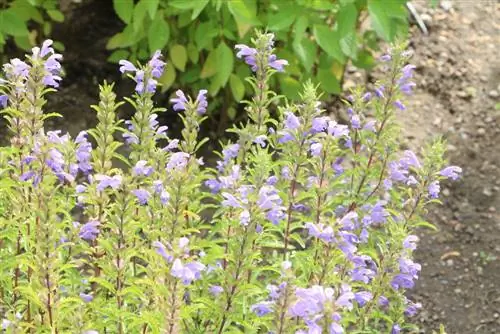
Tip:
The dragon head plant is wonderful as a cut flower for small vases. Over a period of 10 days, the flowers decorate the house and exude a wonderful scent.
Propagate
If you are planting Moldovan lemon balm in your garden for the first time or would like to see it in other places beyond the natural seeding, choose the uncomplicated sowing method. There are two different approaches to choose from with very specific advantages. Plants grown behind glass in March start the gardening season with a robust growth lead. The result is earlier flowering and greater resistance to diseases and pests. Since not every household has enough space for the many cultivation pots that a hobby gardener would like to care for in the spring, direct sowing in April or May can be considered as an alternative.
Sowing behind glass
With the brighter lighting conditions in March, the window of opportunity for sowing seeds on the windowsill, in the winter garden or greenhouse opens. Here's how to do it:
- Fill several 12 cm pots with seed soil, peat sand or coconut fiber
- Distribute the seeds on the substrate
- As a light germinator, sieve the seeds a maximum of 0.5 cm with sand or vermiculite
- Wet carefully with water from the spray bottle
- Alternatively, place the pots in water to water the seeds from below
Germination takes 7-21 days in a partially shaded location at 15 to 20 degrees Celsius. During this time, the substrate must neither dry out nor become completely wet. A cover made of glass or foil has a beneficial effect on the process. As soon as the two cotyledons appear, take the hood away again. Since the small dragon heads do not respond well to pricking, pluck out the weaker specimens from a height of 5 centimeters. By mid-May, the remaining seedlings have completely rooted through the pot and are strong enough to be planted out in beds or pots.
Direct sowing
The scorpionfish is propagated by sowing in spring. If sown early, the seedlings should remain inside; from mid-April you can also sow directly into the garden bed at the desired location. Plants that are to be cultivated in the pot can also be sown here immediately. The seeds are so-called light germinators, which means they should not be covered with soil, but rather just placed on the loosened soil and pressed in slightly. The distance between the individual seeds should be 30 to 40 cm, also from plants of other species that may be sown here in the bed. Germination of Dracocephalum moldavica usually takes between seven and fourteen days. When sowing, you can proceed as follows:
- get the seeds from the trade
- use your own seeds from the previous year
- After flowering, the plant forms clumps about 2.5 mm long
- store these in a warm, dry place over the winter
- Use the seeds in it for sowing in spring
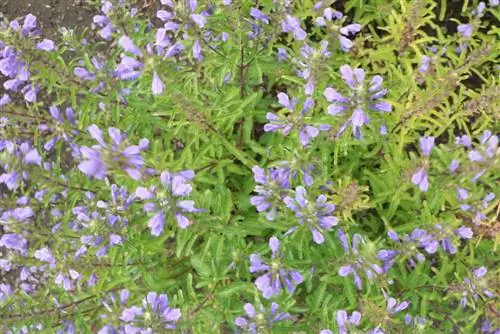
If the seeds are to be sown in early spring, around late February or early March, then the seedlings must be grown in small pots. Well-drained potting soil is used for this purpose. Only a single seed is placed in each cultivation pot, which should have a diameter of approximately 50 cm. This means that the plant can later be planted in its location with the root ball developed and the soil in the pot. Growing in pots is particularly advantageous in areas where night frosts can develop long into spring. The seeds are also protected from ant colonies or birds. The seeds should also be spaced far enough apart so that the plants that form from them later have enough space. These seedlings cannot tolerate pricking out, as is usually the case with seedlings. Therefore, when sowing early in a nursery pot, care must be taken to ensure that only one plant is sown in a pot in which it can develop its root ball before it is planted outdoors.
Tip:
To protect the seeds from birds when sowing in the garden bed, a net should be spread over the sowing bed so that the seedlings receive enough air and sun, but the birds cannot peck the seeds out of the soil.
Plants in the bed
You can plant the early scorpionfish plants in the garden from mid-May. While the planting site is being weeded and loosened up, the young plants that are still potted are allowed to soak up water in a container. How to proceed:
- Dig small planting holes at a distance of 30-40 centimeters with twice the volume of the root ball
- Create a drainage system on the sole made of small shards of pottery, expanded clay or grit
- Mix the excavated material with fine-crumb compost and horn shavings
- Pour a thin layer of the substrate over the drainage, insert the dragon head in the middle and water
Make sure that the Moldovan lemon balm is planted exactly as deep as it was in the nursery pot. A mulching layer of leaf mold, grass clippings or bark mulch keeps the bed soil moist and warm for longer.
Plants in pots
Of course, the dragon's head can also be cultivated at any time with other plants and herbs or as a solitary plant in a pot. So every hobby gardener who doesn't have a garden can bring this fragrant herb to the terrace, balcony and even to the kitchen window. The plant also feels comfortable on a bright windowsill where the window can be opened in the warm summer months. Either the Dracocephalum moldavica is sown with several seeds in a large pot, or as a solitary plant in its own small pots. The following should also be taken into account when sowing in the bucket:
- the Turkish scorpionfish does not tolerate waterlogging
- therefore create drainage before sowing
- to do this, place potsherds or stones over the drain hole
- Plant fleece to avoid blockages caused by soil above it
- Fill in potting soil and sow
Care errors, diseases or pests
Care errors, diseases or pests are not known for the spicy scorpionfish. The only way the entire plant can dry out is if watering has been neglected for a long period of drought. Then the dragon's head can usually no longer be saved and should be disposed of altogether. However, the damage is limited because it is an annual plant that dies on its own in the fall.
Conclusion
The dragon head plant completes the plant community in the natural garden. As an annual, herbaceous ornamental plant, it creates decorative eye-catchers in the flower bed, rock garden or pot. The garden's beneficial insects love the Dracocephalum moldavica because it releases valuable nectar in abundance. One focus of care is the choice of location. If it is sunny here and not too humid, the Moldovan mint thrives. Regularly pampered with a portion of fertilizer and water in dry conditions, the flower with the spectacularly shaped labial petals gives its best. The uncomplicated care results in easy-to-handle sowing behind glass or directly into the bed.

